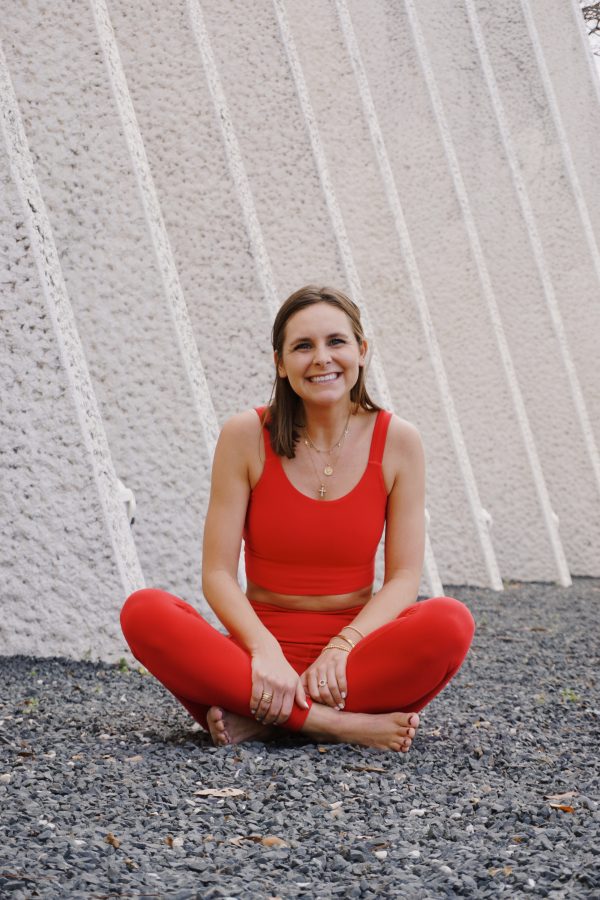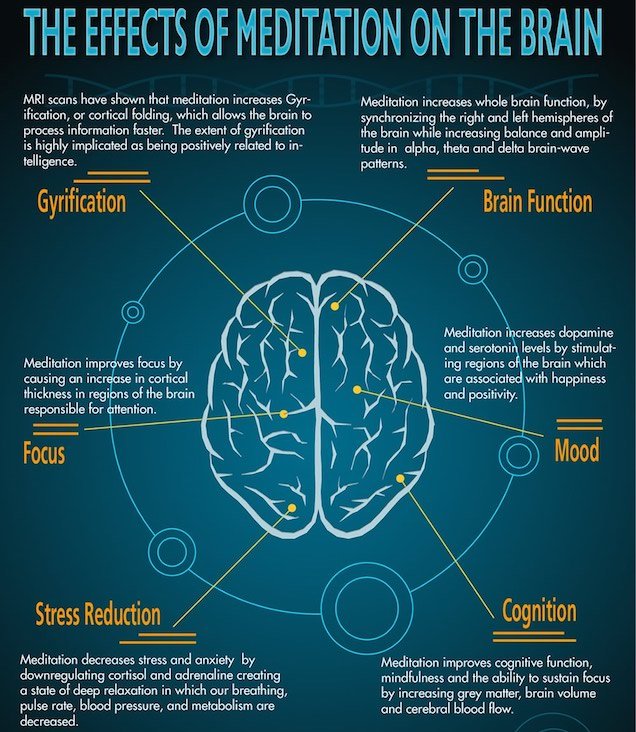
Meditation and I go waaay back, and I’d be lying if I said our relationship has always been roses and sunshine. The summer after my senior year in high school, my mom signed up my entire family to be trained in Transcendental Meditation, an evidence-based form of meditation that requires personalized instruction.

Due to my training, this method is one that I can return to and implement for the rest of my life, and I genuinely appreciate the experience. Yet looking back, I just don’t think that I was mature or introspective enough to truly embrace meditation as an essential part of my daily life.
In my defense, though, TM is based on a 20-minute, twice daily meditation routine which is essentially impossible to request of a soon-to-be freshman in college. Finding even five minutes of alone time without roommates, friends and other distractions was tough enough as it was.
So needless to say, I fell out of my meditation routine for a while there. Throughout my junior and senior years of college and into my post-grad life, I began to struggle with anxiety and dabbled with meditation once again in an attempt to alleviate some of that stress.
It was during this time, though, that I also majorly struggled with perfectionism and my need for control, thus I subsequently convinced myself that my meditations likewise needed to be flawless in order to be worthwhile. The inability to control my thoughts seemingly made the practice more anxiety-inducing than alleviating, so I’d call it quits after a few days or so.
It wasn’t until I finally began to work with a professional on my anxiety that it all seemed to click. He helped me implement a variety of mindfulness practices into my life, meditation included. When I reevaluated my expectations, stopped bullying myself for having a “less then perfect” practice and finally opened up to receive whatever the universe needed to impart upon me through meditation, EVERYTHING CHANGED.
The science-based benefits of meditation have always been mind-blowing enough to keep me coming back for more, but it ultimately took some real introspection as well as a major shift in my outlook for it to become an essential part of my life.
I know I’m not alone in these struggles, so below I’m sharing seven simple, tangible ways for you to finally commit to your own meditation practice, once and for all!
Let go of judgement
Meditation is intended to be a way to let go, not a destination to be reached. When I stopped trying to force my practice into some sort of self-constructed box made up of what I thought it needed to be and instead accepted that it will rarely measure up to this unrealistic expectation, I was able to just let it flow.
The reason so many of us fall out of a meditation routine (or hesitate to begin one in the first place) is due to the judgement and self criticism associated with perceived “failure”. I always fall back on the idea of speaking to myself the same way I would to a friend when I begin to fall into critical self talk surrounding intrusive thoughts or distractions within my meditation.
I often still struggle with constant chatter in my brain and the inability to let go of thoughts, but I’ve learned that’s okay. Which leads me to my next point…
Be flexible – sometimes good enough is good enough
Whether it’s a 20-minute meditation or simply a few moments of deep breathing, the fact that you did it is a major win in and of itself. It’s incredible when you have a truly transcendent, peaceful and rejuvenating experience, but let’s get real, that’s often not always the case.

I previously allowed a “bad” meditation to derail my progress and used it as an excuse to throw my hands up and declare meditation as more stress-inducing than it was beneficial. Therefore, it was just “not for me.”
I’ve since learned to view my practice as I do fitness – some days we wake up energized and power through a workout with ease and vigor, while some days we absolutely trudge through that run or become frustrated when a once “easy” class becomes seemingly impossible.
Meditation is no different. Intrusive thoughts, distracting sounds or interruptions that cause us to cut our time short are inevitable some days. And during those times, you simply have to do your best and chuckle at the universe’s attempt to get under your skin. Shake it off, rise above and look forward to tomorrow’s meditation, which will inevitably be an entirely different experience.
It’s okay to ask for help
While I’m genuinely appreciative for the opportunity to have been trained in TM-style meditation, it in many ways set the president that I had to adhere to the 20–minute, twice daily regime. Therefore, anything less or any other style of meditation didn’t seem “legitimate” enough in my eyes for years.
But when I finally began to give myself some grace and understand that perhaps I needed help in the form of guided meditation in order to ease into a more realistic, consistent routine, I realized that it’s okay to ask for help!
I personally love the Headspace app for guided meditations as it offers a variety of lengths and topics depending on what you’re looking for and able to get in that day.

It’s my intention and hope that I’ll eventually be able to return to my TM practice (likely starting with just 20-minutes, once a day and going from there), but for now, I’m simply embracing what I need and am able to follow through with at the moment.
And I encourage you to do the same! Just as diet, exercise and all forms of self-care are bioindividual, only you know and can determine what the best form of meditation is for you. This will likely change and evolve over time, but just get started with that you need right now.
Add it to your daily to-do list
This has been an absolute game changer for me! If you love your daily planner and crossing items off of your to-do list as much as I do, I’d highly recommend giving it a try. If nothing else, adding meditation to my daily agenda, perhaps subconsciously, forces me to view it as equally important as all of my other must-get-accomplished items that day.
Because at the end of the day, self care IS productive! Altering your mindset to see endeavors that make you your best self as essential is truly a life-altering practice.
Plus, scheduling meditation into my day (and following through) ultimately allowed me to carry out the rest of the tasks that came afterwards with a bit more ease and grace.
Make space – physically & energetically
Coming from someone who is very impacted by the energy of her surroundings, this is a huge one for me. I’ve personally found that sitting down in a comfortable, pleasant space helps me get the most out of my meditation. But this doesn’t mean that your room needs to be filled with Buddhas and incense in order to get the most out of your session. I’ve found that my car is even an enjoyable place to meditate. Do a little experimenting to see where you feel most at ease!
But “space” isn’t just limited to the physical room or area in which we carry out our practice. I encourage you make space in your life and in your soul for meditation. Embracing it as an essential activity that allows you to show up as the best version of yourself is key for creating both an impactful and worthwhile practice. If your energy and mindset aren’t OPEN, you might need to do a little more internal digging to confront those limiting beliefs.
Read up on & remember the benefits
Education is everything! The benefits of meditation are genuinely mind-blowing and are much of the reason I continue to come back to my practice again and again. I genuinely want to take advantage of the good this technique can do for my brain health, anxiety and so much more.
Meditation has been proven to legitimately change the brain for the better as it helps preserve brain aging, rivals the effectiveness of antidepressants for depression and anxiety, helps curb addiction, improves attentiveness and concentration and more.

Plus, it’s wildly effective at reducing stress and has various positive impacts on our relationships (both with ourselves and others). I’ve personally found that meditation makes me more resilient to life’s inevitable curve balls and allows me to flow more easily throughout my day.
These benefits only begin to scratch the surface, so I encourage you to continue to research and keep in mind the personal intention behind your practice. Reminding yourself of the positive outcomes will hopefully persuade you to keep on your path, even when it becomes challenging.
Understand it’s a long game
In order to truly reap the impressive benefits mentioned above, one must understand that meditation isn’t a quick fix or a destination to be reached. It’s called a practice for a reason – it takes constant, consistent work!
And trust me, I understand firsthand just how tempting it can be to ditch your practice when it begins to feel challenging. But with some real, genuine introspection and the implementation of my tips above, you’re already on the path to success.
Please feel free to reach out in the comments below, via email or over Instagram to let me know what you’ve found the most helpful in your own practice!
Happy meditating :)
The latest goods, right in your inbox.
We hate SPAM. We will never sell your information, for any reason.


